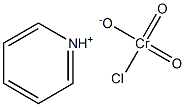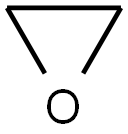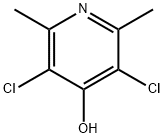2-Chloropyridine-N-oxide
- CAS NO.:2402-95-1
- Empirical Formula: C5H4ClNO
- Molecular Weight: 129.54
- MDL number: MFCD00129036
- EINECS: 219-284-4
- SAFETY DATA SHEET (SDS)
- Update Date: 2025-07-04 15:20:54

What is 2-Chloropyridine-N-oxide?
Chemical properties
White solid
The Uses of 2-Chloropyridine-N-oxide
2-Chloropyridine oxide is a cytotoxic and clastogenic compound.
Properties of 2-Chloropyridine-N-oxide
| Melting point: | 67-70°C |
| Boiling point: | 168-170C |
| Density | 1,209g/cm |
| refractive index | 1,531-1,533 |
| pka | -0.76±0.10(Predicted) |
| Water Solubility | Insoluble in water. |
| Sensitive | Moisture Sensitive |
| BRN | 108585 |
| CAS DataBase Reference | 2402-95-1(CAS DataBase Reference) |
Safety information for 2-Chloropyridine-N-oxide
| Signal word | Warning |
| Pictogram(s) |
 Skull and Crossbones Acute Toxicity GHS06 |
| GHS Hazard Statements |
H302:Acute toxicity,oral H312:Acute toxicity,dermal H315:Skin corrosion/irritation H319:Serious eye damage/eye irritation H331:Acute toxicity,inhalation H335:Specific target organ toxicity, single exposure;Respiratory tract irritation |
| Precautionary Statement Codes |
P261:Avoid breathing dust/fume/gas/mist/vapours/spray. P280:Wear protective gloves/protective clothing/eye protection/face protection. P304+P340:IF INHALED: Remove victim to fresh air and Keep at rest in a position comfortable for breathing. P305+P351+P338:IF IN EYES: Rinse cautiously with water for several minutes. Remove contact lenses, if present and easy to do. Continuerinsing. P405:Store locked up. |
Computed Descriptors for 2-Chloropyridine-N-oxide
2-Chloropyridine-N-oxide manufacturer
JSK Chemicals
2Y
Phone:+91-9879767984
Whatsapp: +91-9879767970
product: 2-ChloropyridineN-oxide, 97% 2402-95-1 99%
Lorven Biologics Pvt Ltd
1Y
Phone:+91-8884110005
Whatsapp: +91-8884110005
product: 2-chloro pyridine N-oxide 2402-95-1 98%
New Products
Sodium glycochenodeoxycholate, >98% Indole Methyl Resin tert-butyl 9-methoxy-3-azaspiro[5.5]undecane-3-carboxylate Gabapentin EP Impurity A 2,5-dichloro-N-hydroxy-4,6-dimethylpyridine-3-carboximidamide 4-Chloro-7-tosy1-7Hpyrrolo[2,3-d]pyrimidine 1,3-Diphenylurea 1,1’-CARBONYLDIIMIDAZOLE R-2-BENZYLOXY PROPIONIC ACID N-METHYL INDAZOLE-3-CARBOXYLIC ACID Zinc Bis-glycinate 2-Hydroxy-5-nitroacetophenone 2,4-dihydroxybenzaldehyde 3-(4-morpholinophenylamino)-5-amino-1H-pyrazole-4-carbonitrile 1,3-Diethyl-1,3-Diphenylurea Methyl 2-methylquinoline-6-carboxylate 2-((4-morpholinophenylamino) (methylthio) methylene) malononitrile 2-HYDROXY BENZYL CYANIDE DIETHYL AMINOMALONATE HYDROCHLORIDE 5-BROMO-2CYANO PYRIDINE Boldenone Clarithromycin Ethinyl Estradiol StanozololRelated products of tetrahydrofuran








You may like
-
 2402-95-1 2-Chloropyridine-N-oxide 99%View Details
2402-95-1 2-Chloropyridine-N-oxide 99%View Details
2402-95-1 -
 2402-95-1 98%View Details
2402-95-1 98%View Details
2402-95-1 -
 2-CHLOROPYRIDINE-N-OXIDE 99%View Details
2-CHLOROPYRIDINE-N-OXIDE 99%View Details
2402-95-1 -
 2-ChloropyridineN-oxide, 97% 2402-95-1 99%View Details
2-ChloropyridineN-oxide, 97% 2402-95-1 99%View Details
2402-95-1 -
 2-chloro pyridine N-oxide 2402-95-1 98%View Details
2-chloro pyridine N-oxide 2402-95-1 98%View Details
2402-95-1 -
 2402-95-1 98%View Details
2402-95-1 98%View Details
2402-95-1 -
 90-01-7 2-HYDROXY BENZYL ALCOHOL 98%View Details
90-01-7 2-HYDROXY BENZYL ALCOHOL 98%View Details
90-01-7 -
 3-NITRO 2-METHYL BENZOIC ACID 98%View Details
3-NITRO 2-METHYL BENZOIC ACID 98%View Details
1975-50-4
Statement: All products displayed on this website are only used for non medical purposes such as industrial applications or scientific research, and cannot be used for clinical diagnosis or treatment of humans or animals. They are not medicinal or edible.
